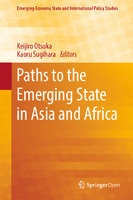Paths to the Emerging State in Asia and Africa
Contributor(s)
Otsuka, Keijiro (editor)
Sugihara, Kaoru (editor)
Language
EnglishAbstract
This book is open access under a CC BY-NC-ND license. This book addresses the issue of how a country, which was incorporated into the world economy as a periphery, could make a transition to the emerging state, capable of undertaking the task of economic development and industrialization. It offers historical and contemporary case studies of transition, as well as the international background under which such a transition was successfully made (or delayed), by combining the approaches of economic history and development economics. Its aim is to identify relevant historical contexts, that is, the ‘initial conditions’ and internal and external forces which governed the transition. It also aims to understand what current low-income developing countries require for their transition. Three economic driving forces for the transition are identified. They are: (1) labor-intensive industrialization, which offers ample employment opportunities for labor force; (2) international trade, which facilitates efficient international division of labor; and (3) agricultural development, which improves food security by increasing supply of staple foods. The book presents a bold account of each driver for the transition.
Keywords
Economics; Management science; Economic history; Development economics; Asia—Economic conditions; China—History; Asia—History; Southeast Asia—HistoryDOI
10.1007/978-981-13-3131-2Publisher
Springer NaturePublisher website
https://www.springernature.com/gp/products/booksPublication date and place
Singapore, 2019Series
Emerging-Economy State and International Policy Studies,Classification
Asian history
Economics
Development economics and emerging economies
Economic history


 Download
Download Web Shop
Web Shop